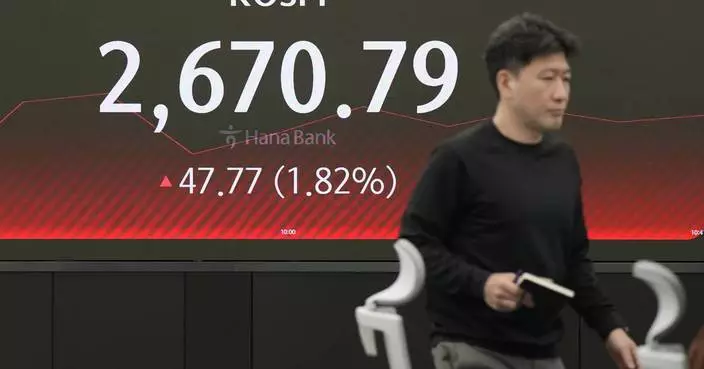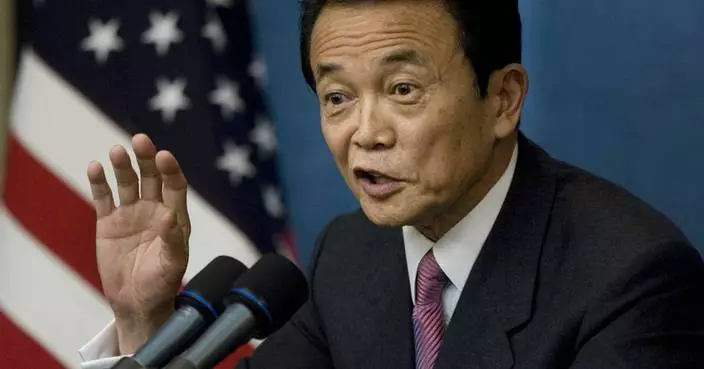A Japanese court on Tuesday sentenced a 70-year-old woman to hang for the deaths of her husband and two other former partners, and the attempted murder of a fourth man.
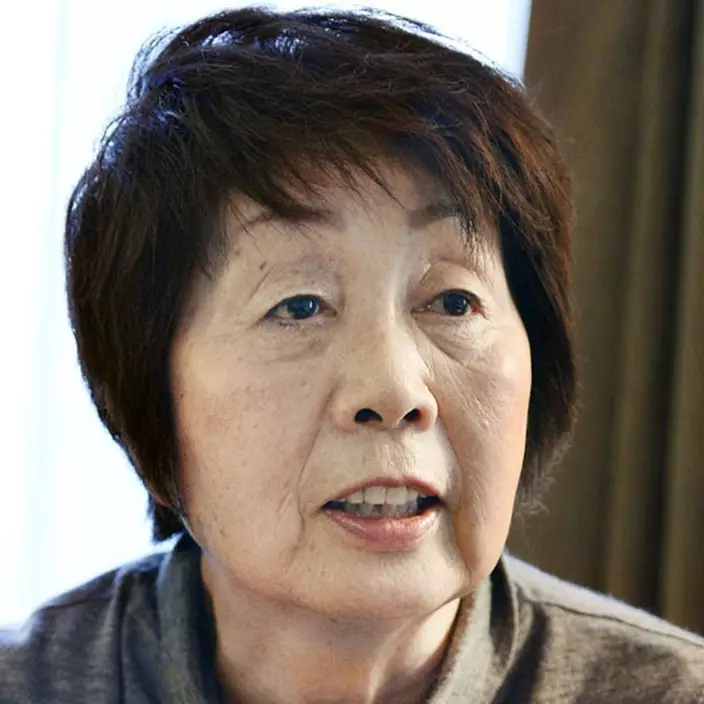
This May 2014 photo shows Chisako Kakehi. A Japanese court has sentenced the woman to hang in a serial poisoning murder case targeting elderly men, including her husband. Kakehi, 70, was convicted Tuesday, Nov. 7, 2017, of killing her husband and two ex-partners, as well as in attempted murder of a fourth victim between 2007 and 2013. (Kyodo News via AP)
Kyoto District Court convicted Chisako Kakehi of the deaths, which occurred between 2007 and 2013.
It said Kakehi poisoned the victims with cyanide after becoming the beneficiary of their wills.
Kakehi reportedly married at least three times and had three other partners who died, all within a few years of starting relationships with her, and amassed about 1 billion yen ($8.8 million) in inheritances over 10 years.
The so-called "poison woman" case surfaced when she was arrested in 2014 in the death of her 75-year-old husband. He died in December 2013, a month after they married. She was later charged with murdering two other men, her former boyfriends aged 71 and 75, and trying to kill a fourth, aged 79.
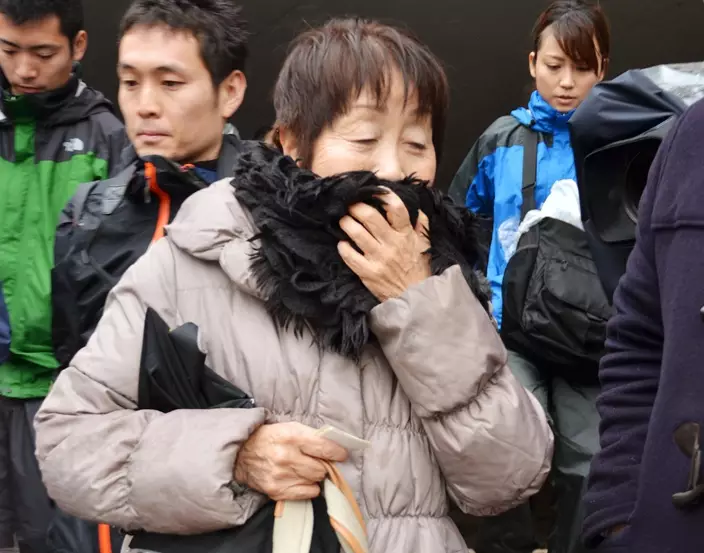
FILE - In this undated photo, Chisako Kakehi, center, answers to a reporter's question in Sakai, western Japan. (Kyodo News via AP, File)
More than 560 people lined up for the 51 seats in the courtroom to hear Tuesday's ruling, NHK public television reported.
The court said traces of cyanide, which she confessed she obtained while running a printing plant, were found in all of the victims. Investigators discovered a small packet of cyanide buried in a flower pot that Kakehi allegedly tried to throw away. The court said she had the men take cyanide capsules, saying they were health supplements.
The court dismissed her lawyers' argument that she had dementia. Her defense also maintained she was innocent, citing insufficient evidence. Judge Ayako Nakagawa said Kakehi was fully responsible for her actions at the time, and that it was a carefully premeditated crime aimed at amassing inheritance money.

People wait in line to hear the trial of Chisako Kakehi, at Kyoto district court in Kyoto, western Japan, Tuesday, Nov. 7, 2017.(Kyodo News via AP)
The court ruled that Kakehi was the only person with the victims at the time of their deaths and had immediately applied for her inheritance each time.
The defense appealed the verdict to a high court, which could take several years.
TOKYO (AP) — Spicy, steaming, slurpy ramen might be everyone’s favorite Japanese food.
In Tokyo, long lines circle around blocks, and waiting an hour for your ramen is normal. What awaits might be just a dive, but a hot bowl of ramen rarely fails to hit the spot.
Often cooked right before your eyes behind dingy counters, the noodle dish starts here at around 1,000 yen ($6.50), and comes in various flavors and local versions. There's salty, soy-based “shoyu” or “miso” paste. Perhaps it's red-hot spicy with a dash of chili. Sometimes there's no soup at all but a sauce to dip the noodles in.
The curly noodles are lighter than the darker buckwheat “soba,” or “udon,” which are also usually flatter or thicker.
Ramen has also surged in popularity in the U.S., South Korea and other countries. Retail sales in the United States have risen 72% since 2000, according to NielsenIQ, a sales tracker. In the 52 weeks ending April 13, Americans bought more than $1.6 billion worth of ramen.
In restaurants, versions beyond the traditional soup are appearing, said Technomic, a research and consulting company for the restaurant industry. Del Taco, a Mexican chain, recently introduced Shredded Beef Birria Ramen, for example.
Packaged ramen that's easily cooked in hot water at home is called instant noodles; it's precooked and then dried. The story of how Momofuku Ando invented instant ramen in a backyard shed in 1958, when food was still scarce, is the stuff of legend in Japan. He went on to found the food giant Nissin Foods.
Although convenient, instant noodles aren't the same as the ramen served at restaurants.
Some Japanese frequent ramen shops twice or three times a week. They emerge, dripping with sweat, smacking their lips.
“I’m probably a talking bowl of ramen,” says Frank Striegl as he leads a dozen American tourists through the back alleys of Tokyo’s funky Shibuya district on what he calls “the ultimate ramen experience.”
The crowd is led behind a shabby doorway, sometimes down narrow stairs, to a dim-lit table where ramen gets served in tiny bowls, practically the size of a latte cup, or about a quarter of a regular ramen bowl. That's so guests have enough room in their tummies to try out six different kinds of ramen, two at each spot during the tour.
One restaurant, Shinbusakiya, offers “Hokkaido classics” from the northernmost main island, while another, Nagi, offers “Fukuoka fusion,” from the southern main island of Kyushu. It includes a green ramen, similar to pasta al pesto. Syuuichi, which means “once a week,” features curry-flavored ramen.
“It’s not just, of course, about eating delicious ramen, but also learning about it,” said Striegl, a Filipino American who grew up in Tokyo. He calls ramen “people’s food.”
“A lot of countries around the world have their version of ramen in a way," he said. "So I think because of that, it’s a dish that’s easy to understand. It’s a dish that’s easy to get behind.”
While the tour participants were relishing their noodles, Striegl outlined a brief history of ramen: Its roots date back to the samurai era, when a shogun took a fancy to Chinese noodles, setting off the localizing journey for ramen that continues today.
Katie Sell, a graduate student on Striegl’s tour, called ramen "a kind of comfort food, especially in the winter. Get a group of friends, go have some ramen and just enjoy it.”
Kavi Patel, an engineer from New Jersey, said he was glad he included the humble ramen on his tour of Japan, along with more established attractions like the ancient capital of Kyoto and the deer park in Nara. “I’m having good fun,” he said.
While ramen has never been more popular in Japan, ramen places have struggled because of the pandemic, the weakening Japanese yen, and the higher cost of wheat imports and energy, according to a study by Tokyo Shoko Research.
One beneficiary of the pandemic is a home delivery service for frozen, professionally cooked ramen. Called takumen.com, it boasts some 500,000 subscribers in Japan.
Another Tokyo operation, Gourmet Innovation, has signed on 250 of the country's top ramen joints to sell packaged versions of their soup, noodles and toppings, to be heated up in boiling water and served at home.
Co-founder and executive Kenichi Nomaguchi, who hopes to expand his business overseas, says ramen and animation are Japan’s most successful exports.
Why ramen? Unlike pasta or curry, ramen is difficult to replicate at home, he said, Making it from scratch involves hours of cooking stock, with pork, beef or chicken, various fish or bonito flakes, and “kombu” kelp. Some stock uses oysters.
Besides the different soup stocks and flavors, onions, grated garlic, ginger or sesame oil can be added for extra punch. Toppings can include bean sprouts, barbecued pork, boiled or raw eggs, seaweed, fermented bamboo shoots called “menma,” chopped green onions, cooked cabbage, snow peas or corn.
Some insist a bowl of ramen is not complete without a slice of narutomaki, a whitefish cake with a pink spiral pattern.
Unusual varieties include coffee ramen and ramen topped with ice cream or pineapple.
Jiro-style ramen, named for a legendary restaurant in Tokyo, features mounds of vegetable toppings, huge steak-like barbecued pork and pungent, grated garlic seeped in a fatty pork-based stock.
“Impact is important. So the pork has to be big so it’s truly memorable,” said Kota Kobayashi, who serves Jiro-style ramen at his chain, “Ore No Ikiru Michi,” which translates to, “The way I live my life.”
Kobayashi is a former professional baseball player at the Yokohama Bay Stars, and played with the minor league Cleveland Guardians before switching to his ramen business.
“When I quit baseball, I chose ramen as my way of life,” he said with a smile.
He can wax philosophical about ramen. One cultural difference he has observed is that Americans tend to leave the noodles and drink all the soup, while the Japanese mostly do the opposite.
And taste is only part of what makes good ramen. One must also offer entertainment, Kobayashi said.
At his restaurants, the chopsticks are tucked in a box on a shelf, so first-time visitors ask where they are. Repeat customers go straight to that box. Kobayashi calls out, “Welcome back,” making the customers feel a connection, even if he doesn't remember a thing about them.
Dee-Ann Durbin contributed to this story from Detroit.
Yuri Kageyama is on X: https://twitter.com/yurikageyama
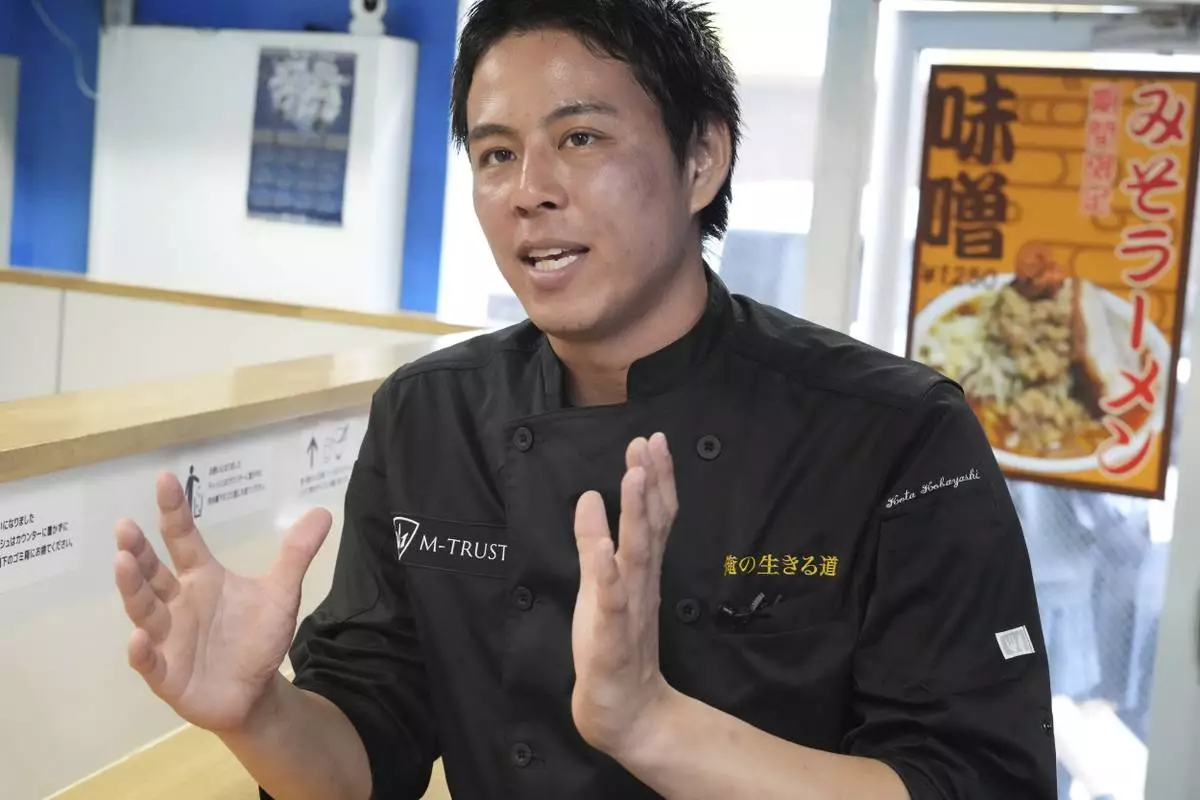
Kota Kobayashi, owner of a chain ramen shop called "Ore No Ikiru Michi," speaks during an interview with The Associated Press on April 17, 2024, in Tokyo. (AP Photo/Eugene Hoshiko)
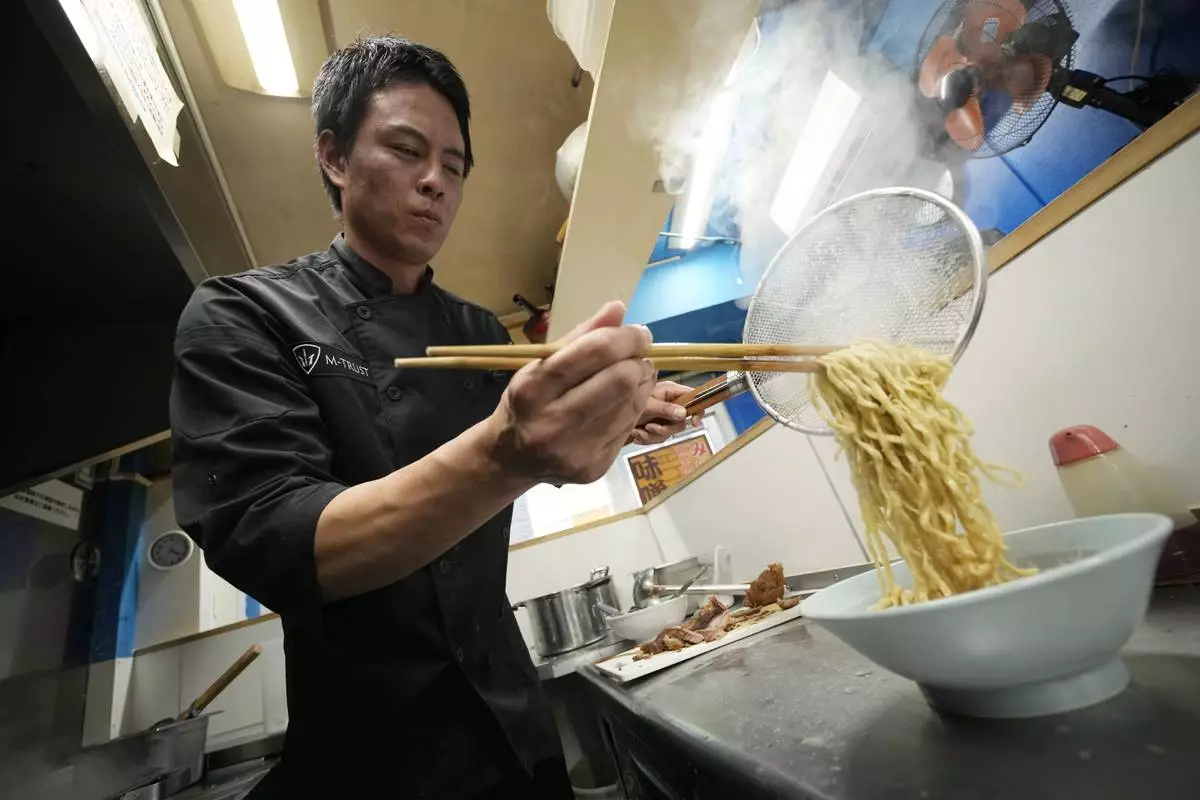
Kota Kobayashi prepares a bowl of noodle at his chain called "Ore No Ikiru Michi" in Tokyo on April 17, 2024. (AP Photo/Eugene Hoshiko)
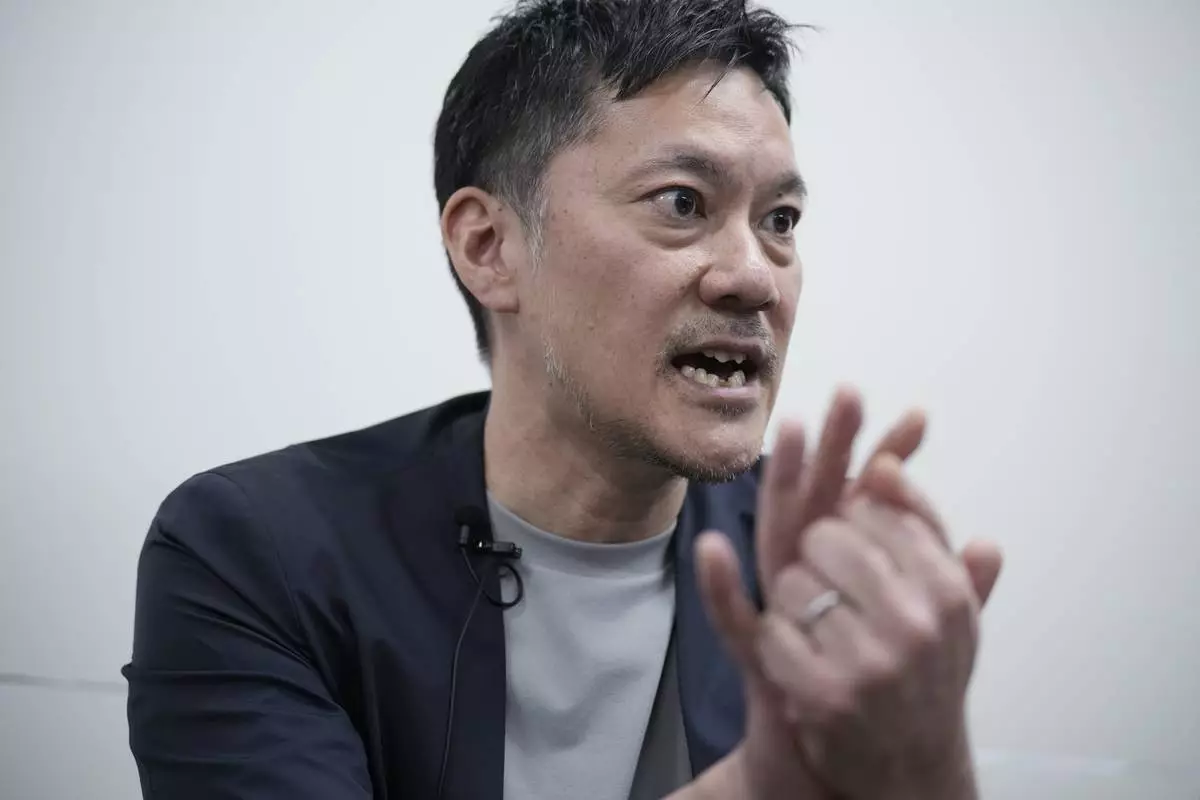
Co-founder and executive Kenichi Nomaguchi of Gourmet Innovation, speaks during an interview with The Associated Press in Tokyo, on April 10, 2024. Gourmet Innovation has signed on 250 of the country's top ramen joints to sell packaged versions of their soup, noodles and toppings, to be heated up in boiling water and served at home. (AP Photo/Eugene Hoshiko)
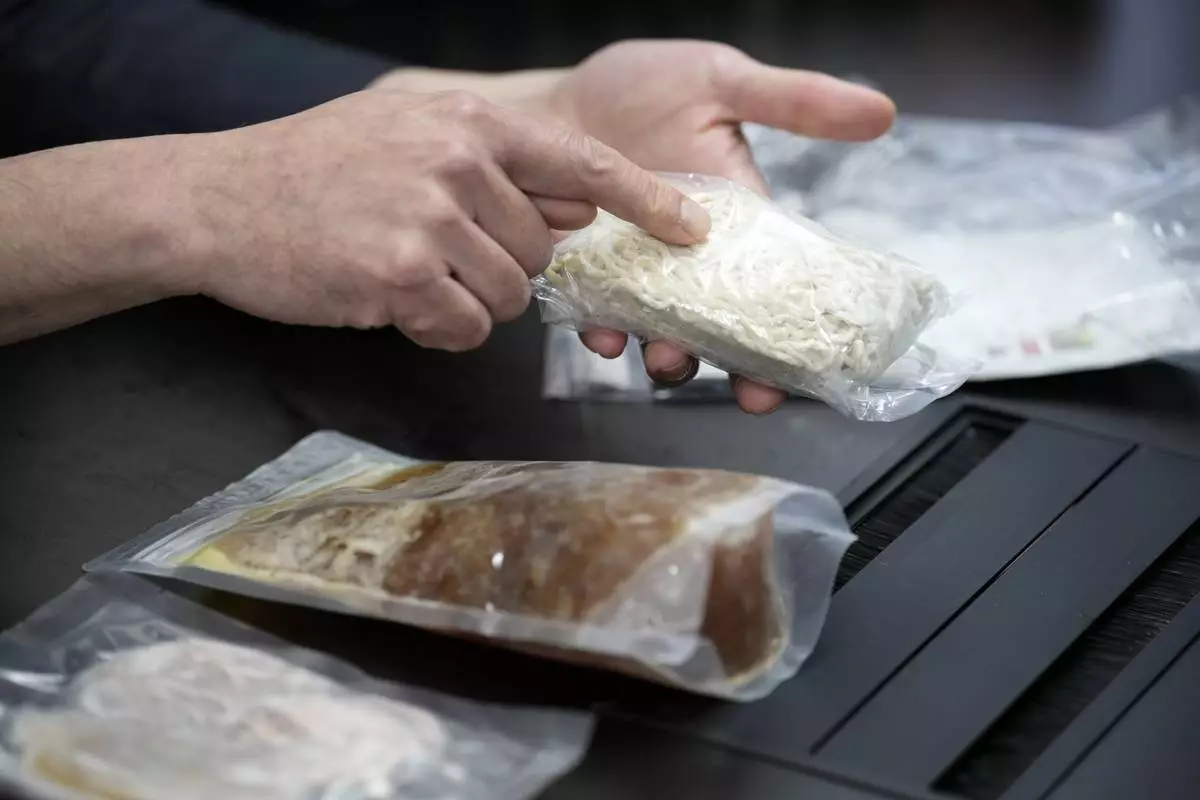
Co-founder and executive Kenichi Nomaguchi of Tokyo-based Gourmet Innovation, explains on the merchandise during an interview with The Associated Press, in Tokyo on April 10, 2024. Gourmet Innovation has signed on 250 of the country's top ramen joints to sell packaged versions of their soup, noodles and toppings, to be heated up in boiling water and served at home. (AP Photo/Eugene Hoshiko)
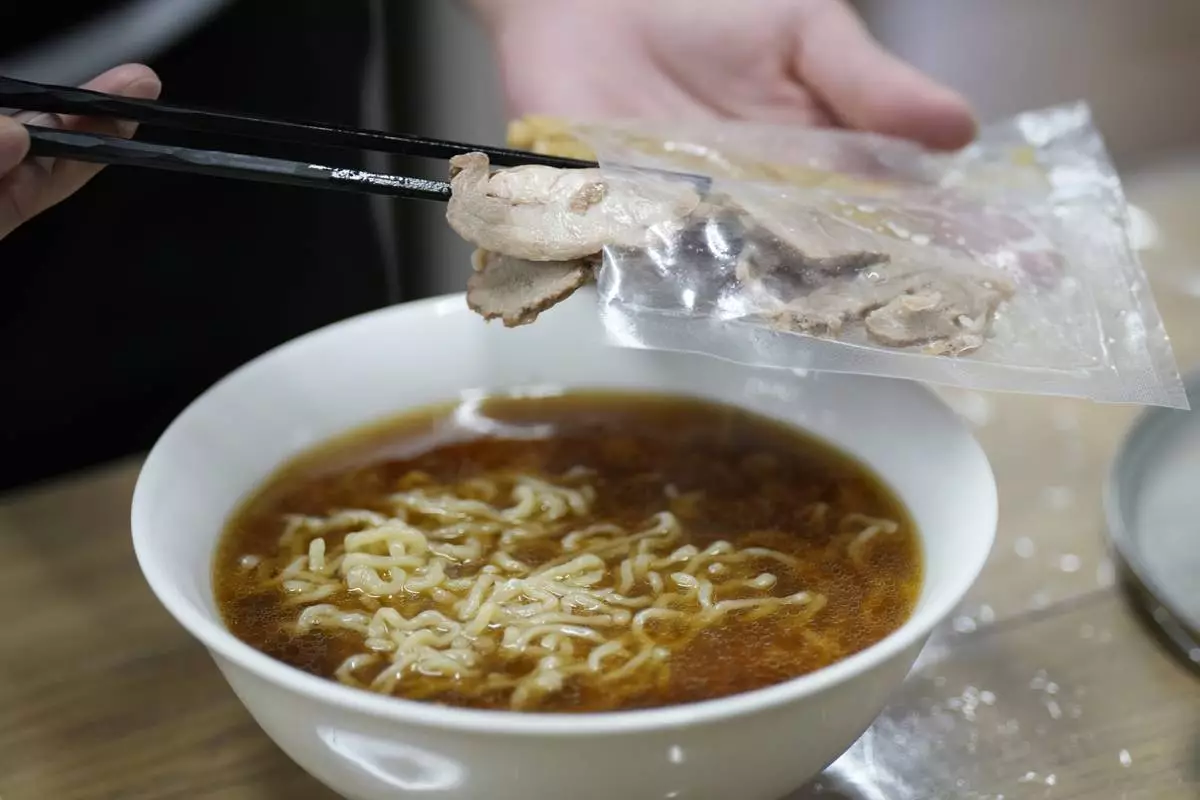
A staff member cooks one of their ramen merchandise sold online at Gourmet Innovation in Tokyo, on April 10, 2024. Gourmet Innovation has signed on 250 of the country's top ramen joints to sell packaged versions of their soup, noodles and toppings, to be heated up in boiling water and served at home. (AP Photo/Eugene Hoshiko)
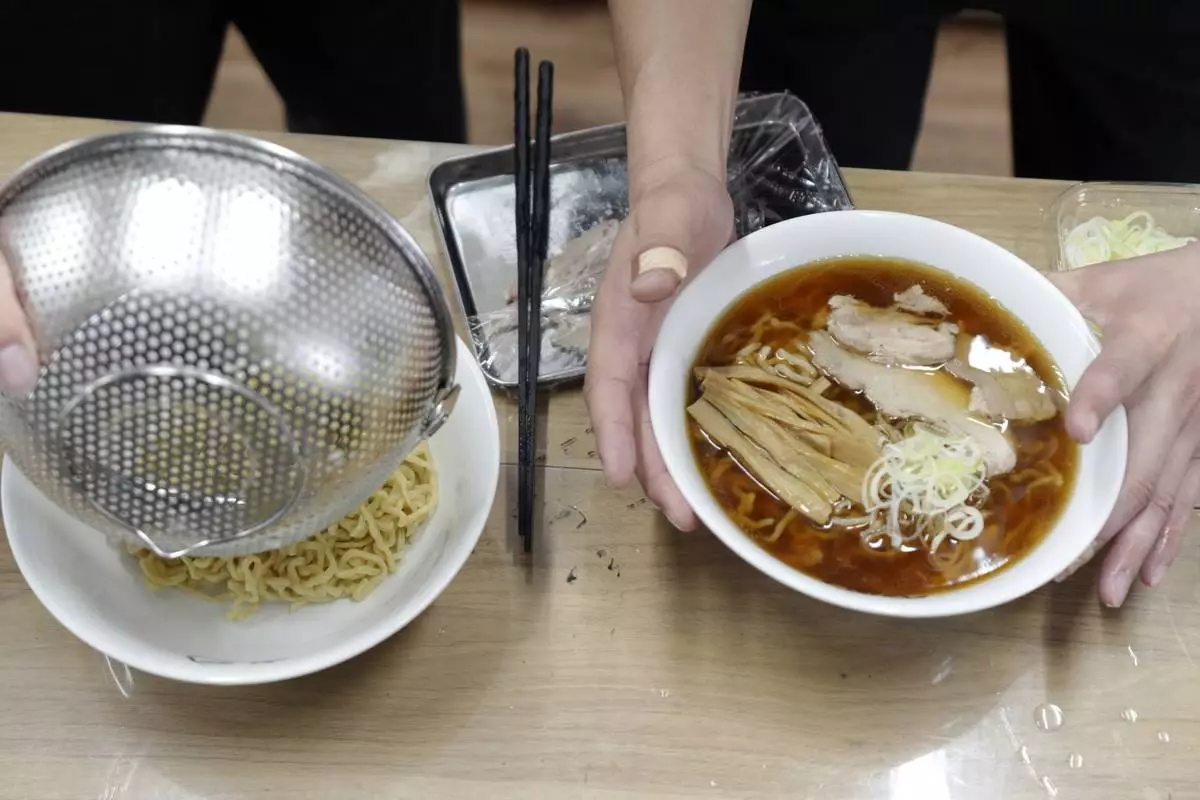
A staff member cooks one of their ramen merchandise sold online at Gourmet Innovation, in Tokyo Wednesday, April 10, 2024. Gourmet Innovation has signed on 250 of the country's top ramen joints to sell packaged versions of their soup, noodles and toppings, to be heated up in boiling water and served at home. (AP Photo/Eugene Hoshiko)
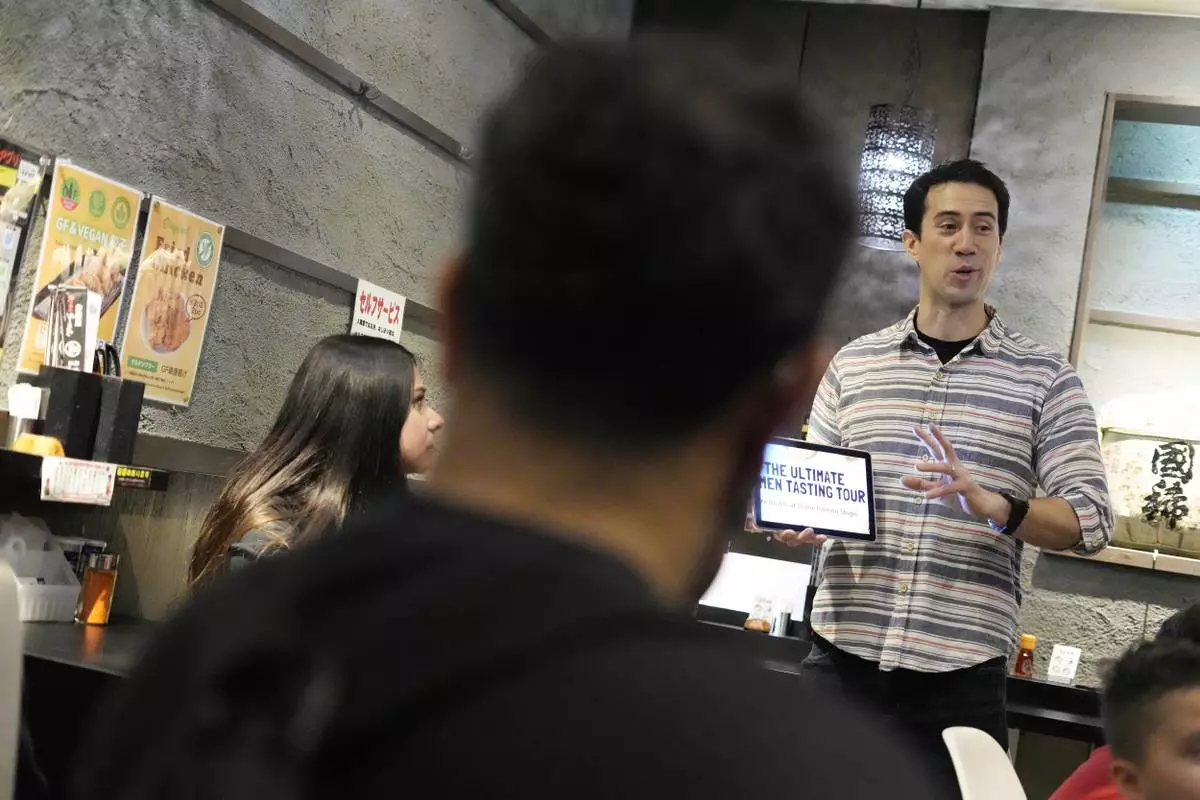
Frank Striegl, right, a guide of Tokyo Ramen Tours, explains foreign participants of a ramen tasting tour at Shinbusakiya, a ramen shop which offers "Hokkaido classics," at Shibuya district on April 2, 2024, in Tokyo. (AP Photo/Eugene Hoshiko)
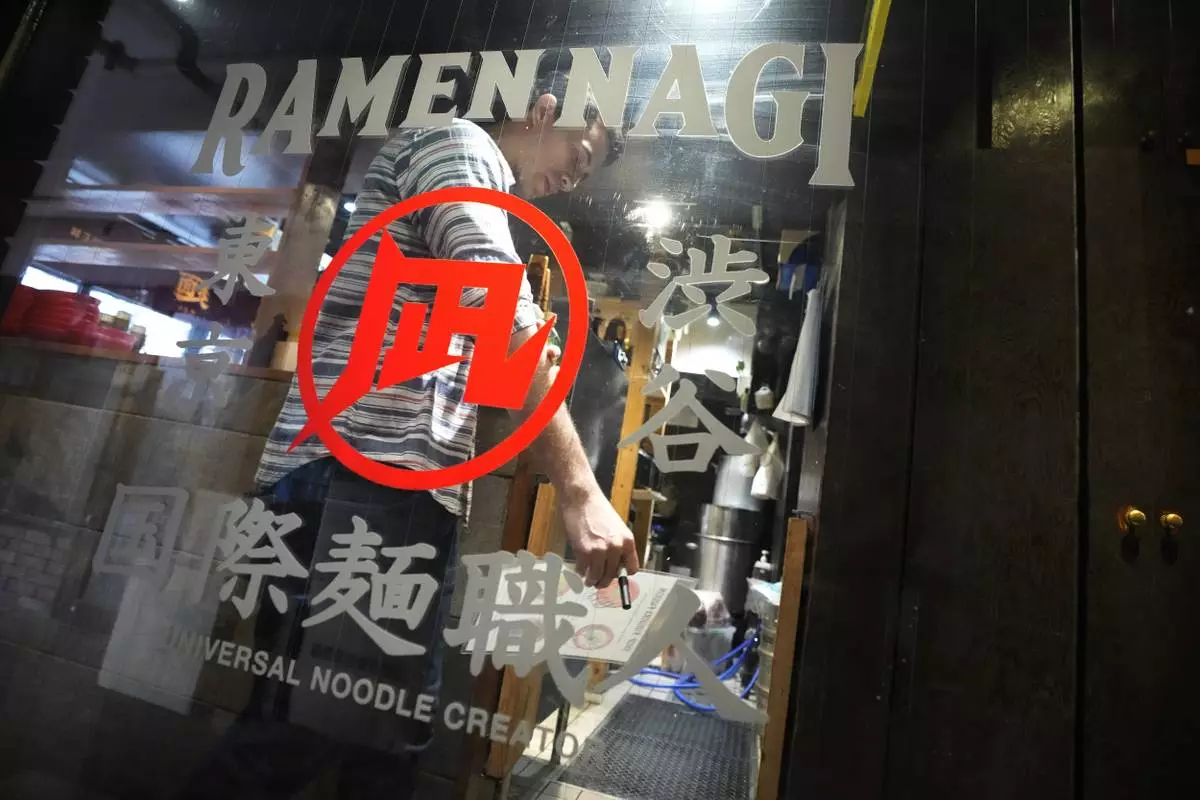
Frank Striegl, a guide of Tokyo Ramen Tours, walks inside Nagi, which offers "Fukuoka fusion," type ramen at Shibuya district on April 2, 2024, in Tokyo. (AP Photo/Eugene Hoshiko)
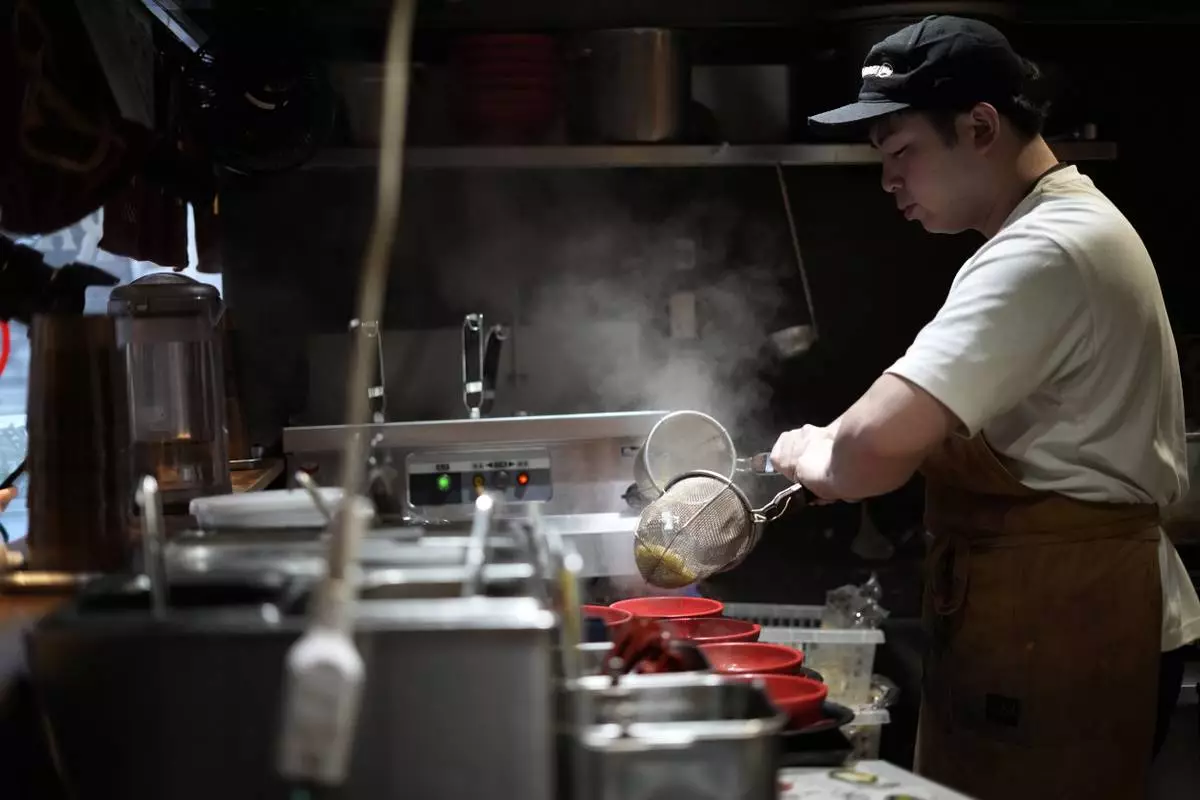
A chef cooks noodle for participants of Tokyo Ramen Tours at Nagi, which offers "Fukuoka fusion," type ramen at Shibuya district on April 2, 2024, in Tokyo. (AP Photo/Eugene Hoshiko)
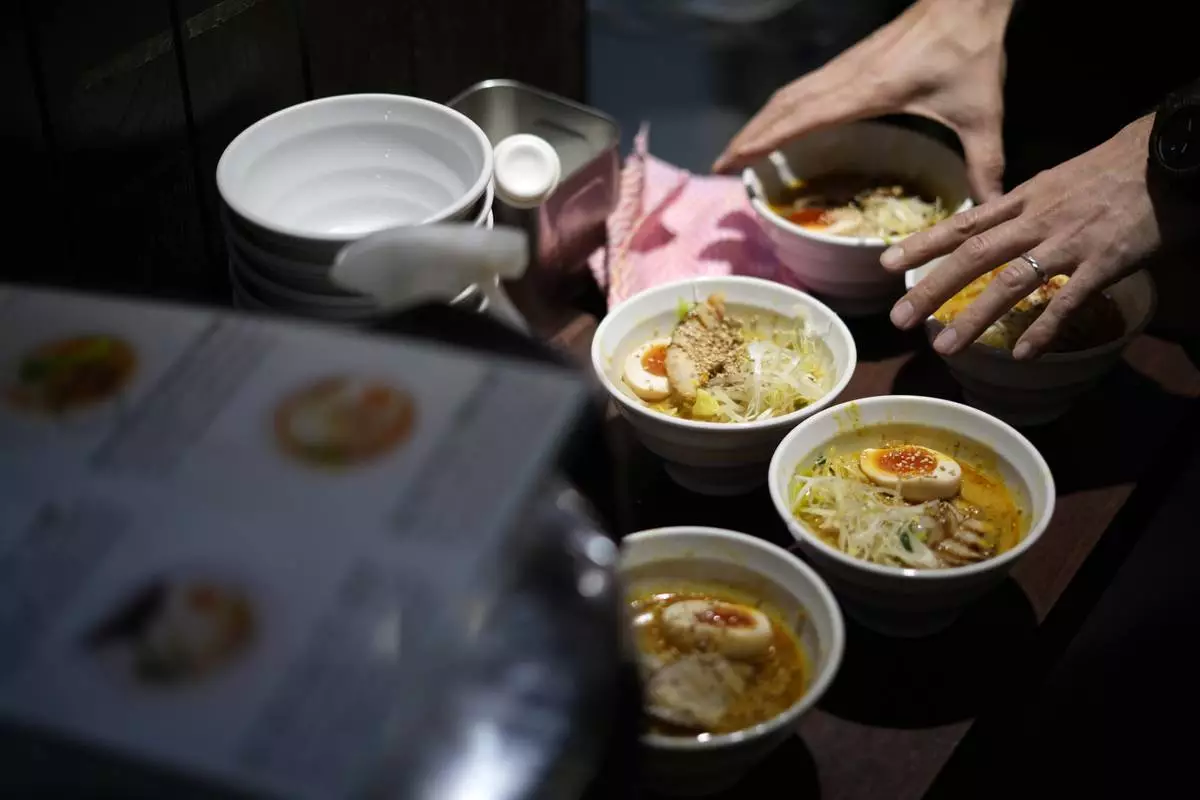
A staff member prepares to serve noodles for participants of Tokyo Ramen Tours at Syuuichi, which means "once a week," featuring curry-flavored ramen, at Shibuya district on April 2, 2024, in Tokyo. (AP Photo/Eugene Hoshiko)
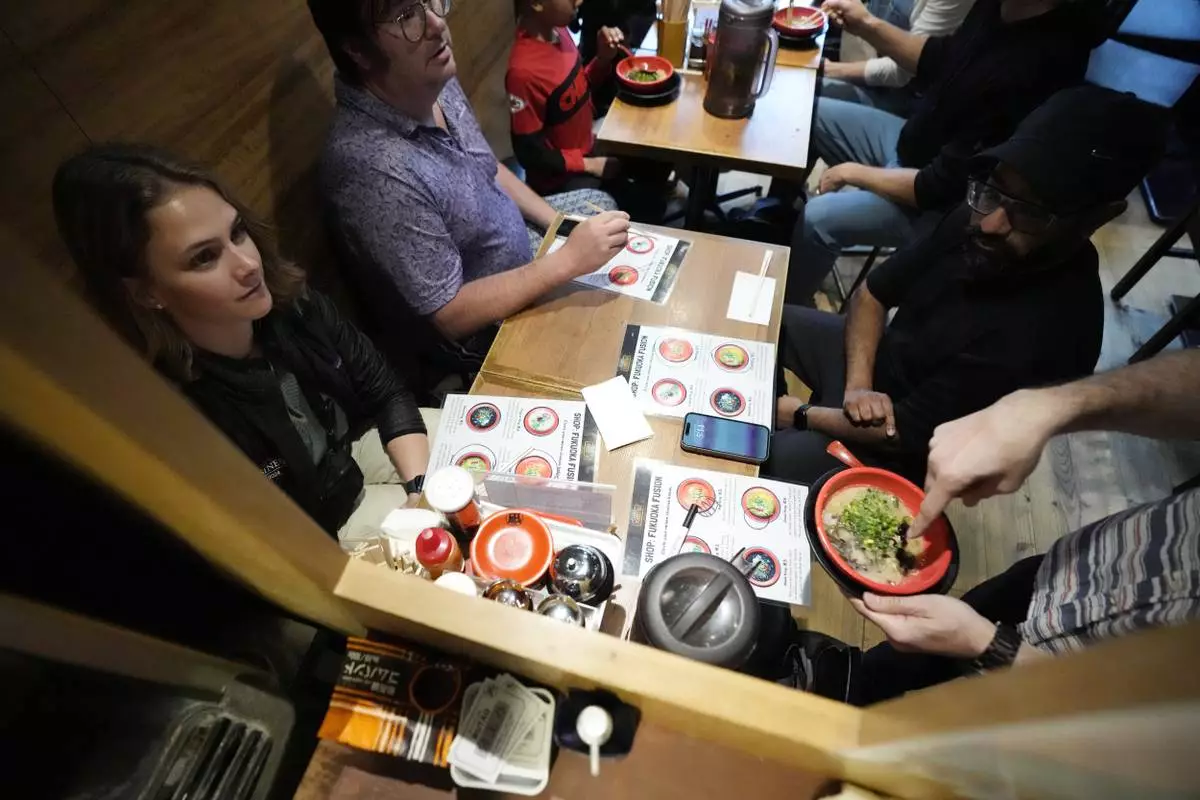
Frank Striegl, bottom right, a guide of Tokyo Ramen Tours, explains participants of a ramen tasting tour at Nagi, which offers "Fukuoka fusion," type ramen at Shibuya district on April 2, 2024, in Tokyo. (AP Photo/Eugene Hoshiko)
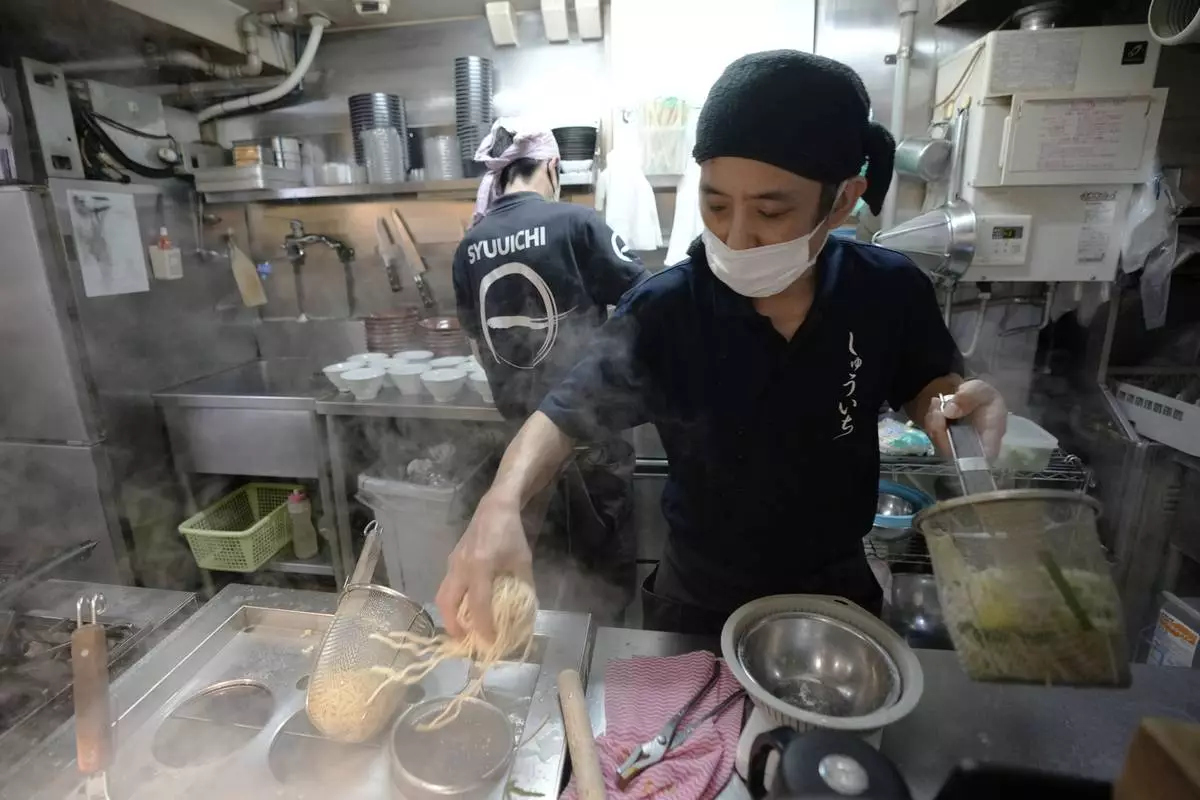
Chefs prepare noodles for participants of Tokyo Ramen Tours at Syuuichi, which means "once a week," featuring curry-flavored ramen, at Shibuya district on April 2, 2024, in Tokyo. (AP Photo/Eugene Hoshiko)
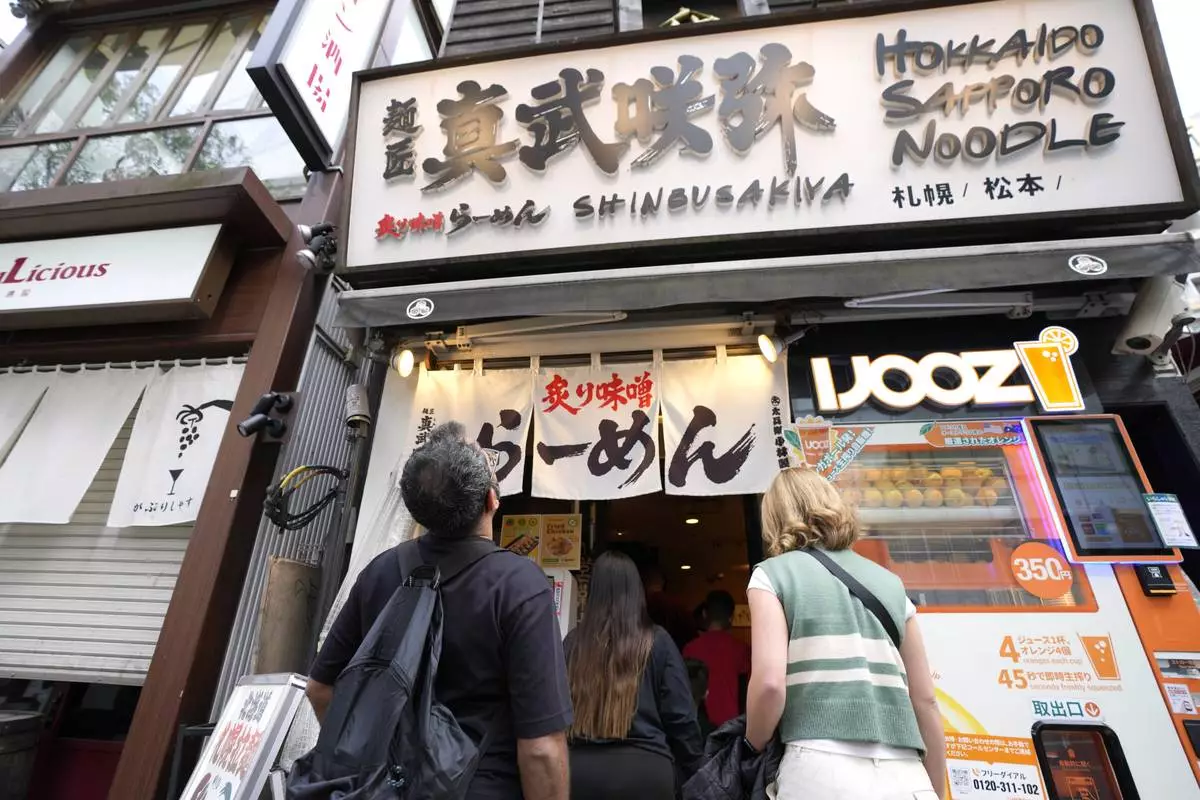
Participants of Tokyo Ramen Tours enter Shinbusakiya, a ramen shop which offers "Hokkaido classics," at Shibuya district on April 2, 2024, in Tokyo. (AP Photo/Eugene Hoshiko)
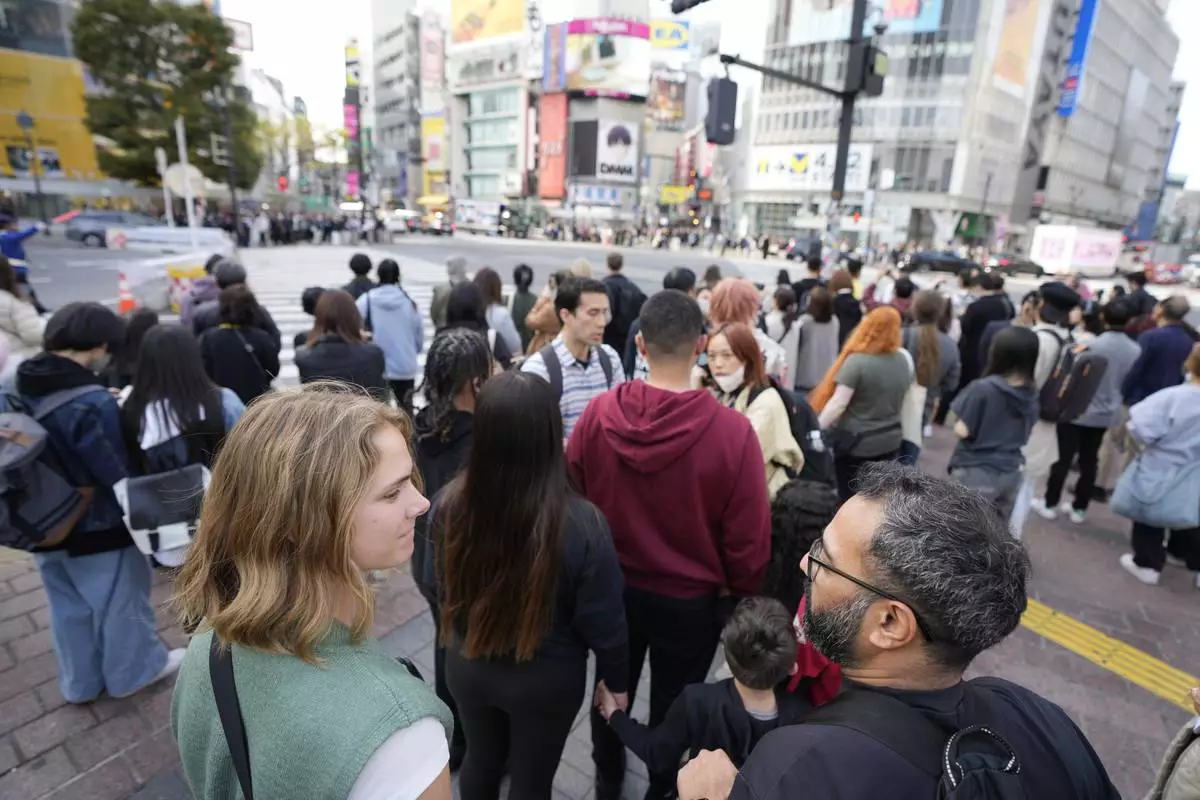
Frank Striegl, center, a guide of Tokyo Ramen Tours, leads several participants of a ramen tasting tour near Shibuya pedestrian crossing at Shibuya district on April 2, 2024, in Tokyo. (AP Photo/Eugene Hoshiko)
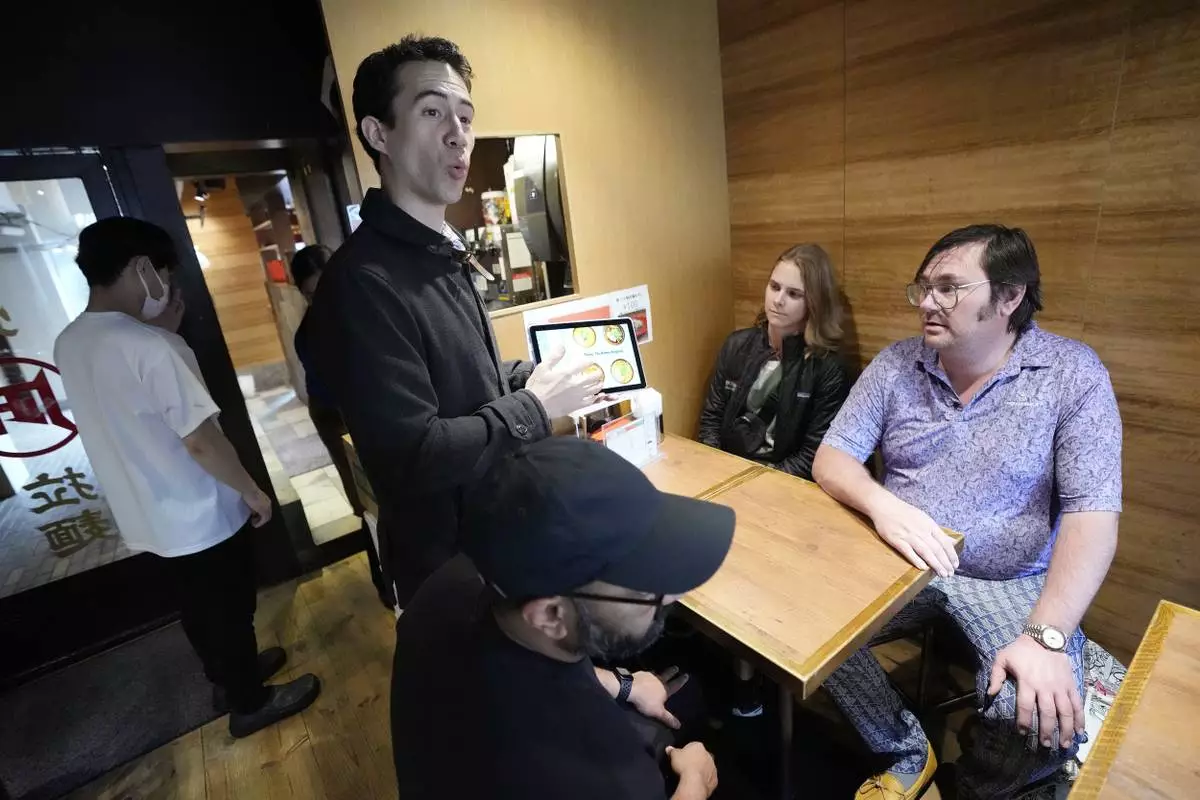
Frank Striegl, standing at center, a guide of Tokyo Ramen Tours, explains foreign participants of a ramen tasting tour at Nagi which offers "Fukuoka fusion," type ramen at Shibuya district on April 2, 2024, in Tokyo. (AP Photo/Eugene Hoshiko)
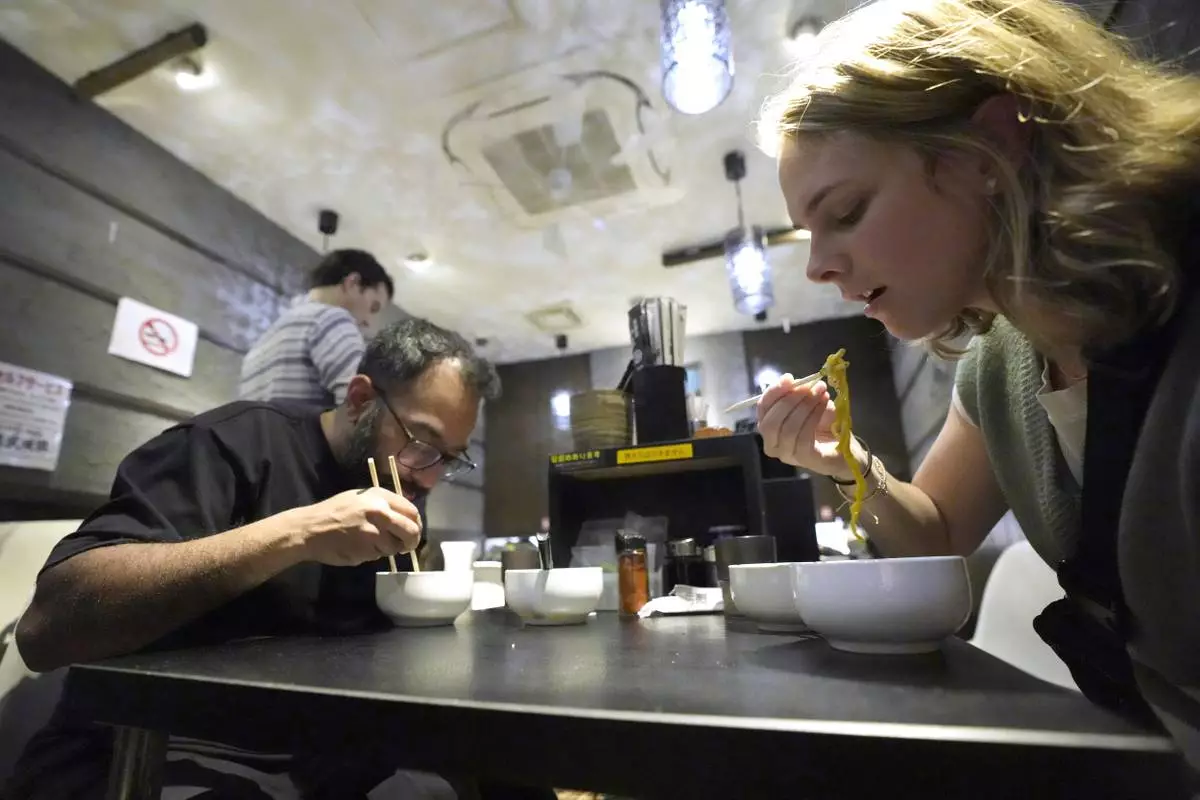
Participants eat the noodle at Shinbusakiya, a ramen shop which offers "Hokkaido classics," during Tokyo Ramen Tours at Shibuya district on April 2, 2024, in Tokyo. (AP Photo/Eugene Hoshiko)
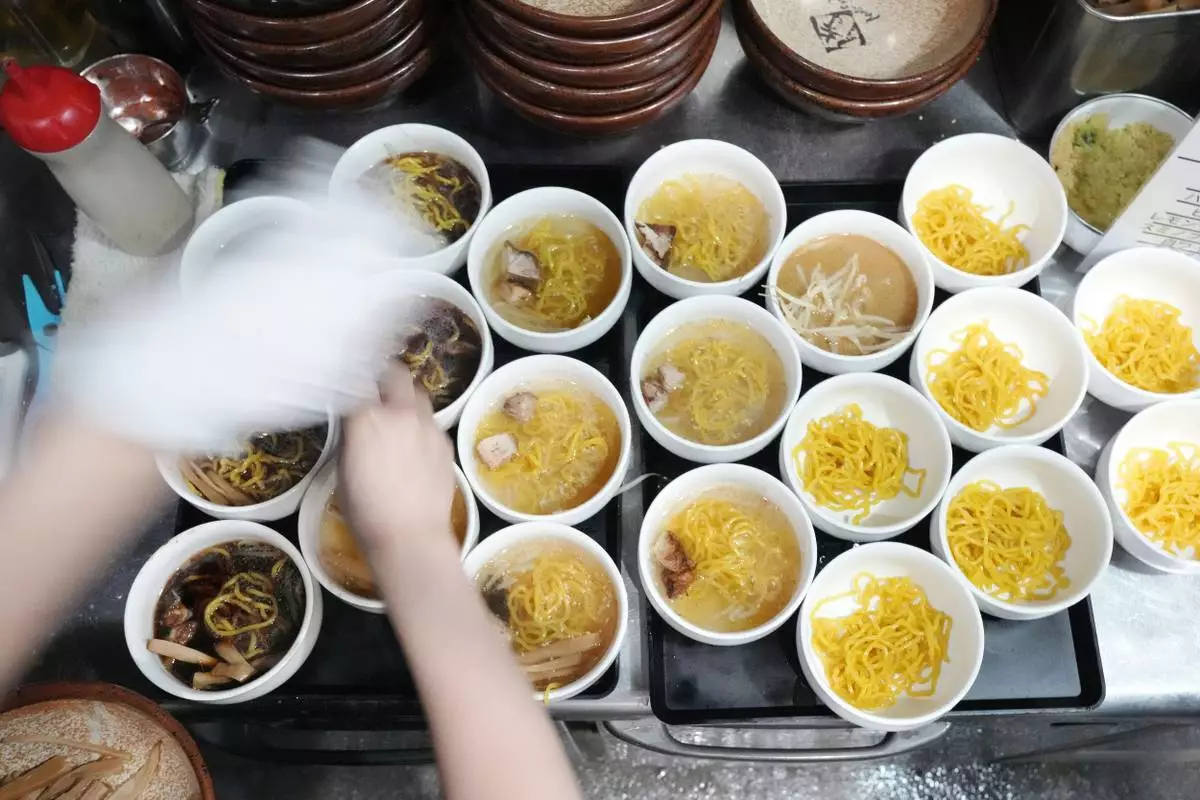
A staff member prepares small bowls of noodle for participants of Tokyo Ramen Tours at Shinbusakiya, a ramen shop which offers "Hokkaido classics," at Shibuya district on April 2, 2024, in Tokyo. (AP Photo/Eugene Hoshiko)























